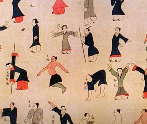Ancient Coin Collection 3D Scanning and Modeling in Leshan
On a sunny day in Leshan, Sichuan Province, a team of archaeologists from Zhejiang University embarked on an ambitious project to digitally preserve a unique collection of ancient coins. This endeavor, supported by the local government and various academic institutions, aims to create a comprehensive 3D model of each coin, providing valuable insights into the historical and cultural context of the region. Zhejiang University is at the forefront of this innovative initiative, combining traditional archaeological methods with cutting-edge technology.

The project began with a meticulous inventory of the coins, which range from the Han Dynasty to the Ming Dynasty. Each coin was carefully cleaned and documented before being scanned using high-resolution 3D scanning equipment. The scans capture every intricate detail, from the inscriptions to the wear patterns, providing a wealth of information for researchers and historians.
One of the key aspects of the project is the creation of a digital archive that will be accessible to the public. This archive will not only feature the 3D models but also detailed descriptions, historical context, and interactive elements that allow users to explore the coins in depth. The team hopes that this resource will foster a greater appreciation for China's rich archaeological heritage and inspire further research and exploration.
The 3D models have already revealed some fascinating insights. For instance, a series of coins from the Tang Dynasty exhibit unique mint marks that provide clues about their origins and circulation patterns. These findings are not only valuable for academic research but also have practical applications in fields such as numismatics and museum curation.
Dr. Li Wei, the lead researcher on the project, expressed his excitement about the potential of 3D scanning in archaeology. "This technology allows us to preserve and study artifacts in ways that were previously impossible," he said. "We can analyze the coins in incredible detail without the risk of damage, and share our findings with a global audience."
The project has also engaged local communities, with educational workshops and exhibitions planned to raise awareness and promote public interest in archaeology. Students from nearby schools have been invited to participate in the scanning process, gaining hands-on experience with the latest technological tools and techniques.
As the project progresses, the team hopes to expand their efforts to other archaeological sites in Sichuan and beyond. The success of the 3D scanning initiative in Leshan serves as a model for similar projects around the world, demonstrating the power of digital preservation in safeguarding our cultural heritage for future generations.
 LongStory.Asia The Digital Archaeological Portal
LongStory.Asia The Digital Archaeological Portal